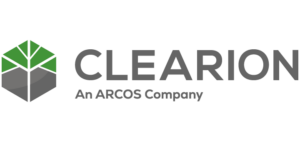Posted by Daniel Gardner

When I transitioned from Clearion two years ago to a new position as a Field Engineer with Metropolitan Communications Group (MCG), I was unsure what to expect in my new position. After supporting one of the top Global Telecom Transmission engineering consultants through their use with Clearion for the previous year and a half, I felt I had a fairly complete picture of their workflow process. It soon became evident I had more to learn.
The first lesson that I quickly learned is that the workflow process for constructing new long haul fiber optic cable routes differs from the process of doing smaller maintenance projects on existing routes. Our group focused primarily on projects regarding the maintenance of existing fiber and I noticed that while the telecom database configuration in Clearion Mobile provided a complete solution for tracking the engineering and construction of long haul fiber routes, it had some room for improvement on the maintenance side. The workflow process for designing new long haul routes involves using aerial imagery and designing on the engineering map in Clearion Mobile. For maintenance projects, however, the timeframe for design is often tighter and instead of basing the design off of aerial imagery, it is based on the location of existing fiber. For that reason, I observed that many of the maintenance consultants are not using the Engineering map for design and are bypassing that stage of the workflow process altogether.
One of my main goals now that I have returned to work for Clearion is to implement a new workflow process focused specifically on the maintenance side of these fiber routes. This new workflow process that I have devised is a product of my field experience along with my discussions with Clearion users, project managers, and telecom engineers. The goal of this new process is to assure that design for these maintenance projects can be done quickly, efficiently, and be easily tracked by project managers and engineers.
Another aspect of the Telecommunication industry that I learned is that each engineering group operates differently and while this is to be expected in any industry, it further reiterates my desire to implement workflow processes which are consistent and more specific to the consultants’ needs. As previously mentioned, some groups use the same workflow for designing maintenance projects and new builds, while others do design for maintenance projects in AutoCAD or in another platform. Another key goal is to assure the data is relevant, detailed, and consistent. By acknowledging which consultants are using the technology for maintenance work as opposed to new builds and instructing them to utilize the correct workflow process, I feel that this goal will become a reality.

I am grateful for the opportunity to have worked for MCG and the knowledge and experience gained has proven to be valuable for my role as a GIS Analyst at Clearion. I look forward to hearing your feedback and will continue pushing to make the processes user-friendly, efficient, and valuable for our telecom community.
